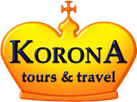Kourion was an important city-kingdom in antiquity and stands as one of the most impressive archaeological sites in Cyprus. Its theatre – located on the southern end of the abrupt hill on which the city is built – is of great significance.
The theatre was constructed at the end of the 2nd century BC, but took its current dimensions during the 2nd century AD. Consisting of a semicircular orchestra that is surrounded by seats of the cavea (subterranean cells), it was enclosed to the south by the building of the scaenae frons (façade) that must have reached the height of the cavea, though today only the foundations remain.
On either side of the stage were two vaulted parodoi (corridors) from where the audience entered the theatre. The theatre could seat up to 3,500 spectators.
In the beginning of the 3rd century AD modifications were made, and the theatre was transformed into an arena that was used for fights with wild animals. At the end of the 3rd century AD, the arena spectacles declined and the theatre reassumed its proper purpose.
Excavations began in 1933, conducted by the University of Pennsylvania, whilst many other University Archaeological Missions – as well as the Cyprus Department of Antiquities – continued the excavations.


Comment (0)